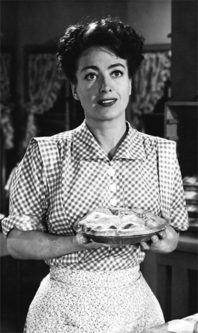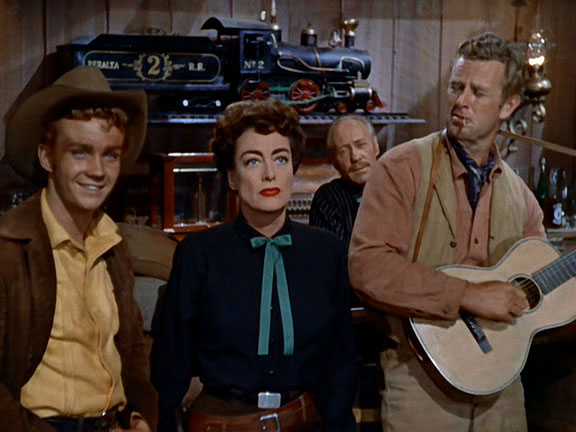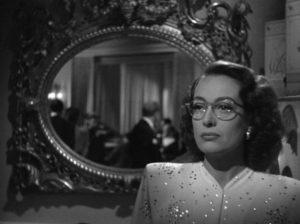
TIFF is doing a glorious retrospective of Joan Crawford’s movies. They give it the title A Woman Possessed, recalling Curtis Bernhardt’s Possessed. That has Crawford playing a woman whose love for Van Helfin gets her into the mental ward. Sure, she played her share of those characters during the late 1940s and onward. Nonetheless, the retrospective’s title has its room for examination.
And that’s because ‘possessed’ implies a passivity that most of Crawford’s characters don’t have. The retrospective’s opener, Mildred Pierce, proves that point. There, the title character negotiates a marriage with her second husband Monte Bergeron (Zachary Scott). Any other female character would have waited for the man to propose. But as that movie shows, she can’t easily call the shots with her daughter Veda (Ann Blyth).
The other shocking element in Mildred Pierce is how Mildred finds herself within archaic class structures. There’s a line that Mildred says about how Veda looks down on her for working for a living. This contrasts my immigrant perspective of North Americans prescribing value within work. Mildred might be a self-made woman, but there are things she can’t escape. The retrospective’s title makes sense, after all.
Inescapable class structures also dominate one of Crawford’s most critically acclaimed movies, Johnny Guitar. It’s a classic that predicts the campy cinema a decade after its original release. It also shows another theme in Crawford’s filmography, that of a woman with an ambivalent relationship with her past. Most of the time she tries to escape it. To start a life as a woman running a gambling joint out West. That doesn’t work out.
Some of Crawford’s characters’ entrepreneurial attempts get the same result. Whatever Happened to Baby Jane? is another camp classic but it’s different from her other movies about women hiding from their pasts. Here she plays Blanche Hudson, whose sister, the titular Jane (Bette Davis), tries to rob the past from her. Her only access to it are reruns on television, which Jane tries to turn off. The actresses, with versatile director Robert Aldrich, then show how complex their dynamic really is.
Her younger characters, like Crystal Allen in George Cukor’s The Women, had more conventional arcs. There she tries to steal an off screen Stephen Haines from his onscreen wife Mary (Norma Shearer). This differs from her stint with Warner Brothers. MGM frustrated her by putting her in movie like this where she plays the other woman. But I suppose this serves a problematic male audience who have momentary yearnings. Yearnings to have a break from their marriage so they can be with her.
MGM didn’t always treat Crawford badly, even if she didn’t always get first billing. She was third billing in Edmund Goulding’s Grand Hotel under Greta Garbo and John Barrymore. But she was the best of the three. All three have their histories and baggage going into the hotel. Crawford and Garbo are even the same age. But Crawford here represented a bright future contrasting the rest of the cast who symbolized a hallowed, increasingly distant past.
Then the retrospective fast forwards into that future. A Warner’s picture, Humoresque, shows a middle aged Crawford as a resplendent socialite, Helen Wright. One who made the mistake of falling in love with a musician, Paul Boray (John Garfield). Underrated, this is Crawford at her most generous. Crawford and Garfield are each other’s counterpoints. He represents, as he does in most of his movies, a proletarian energy. The first scenes where he dominates have the whirling energy of what it’s like to be a New Yorker. Crawford on the other hand brings a calming presence to his life, one she can’t sustain.
A Woman Possessed: The Films of Joan Crawford is a retrospective at TIFF. It starts with Mildred Pierce on the night of October 7. It also goes throughout Noirvember. That’s for those of you who want Crawford as your femme fatale next month. Even though yes, she’s not always a femme fatale. Go right here for showtimes and tickets.

